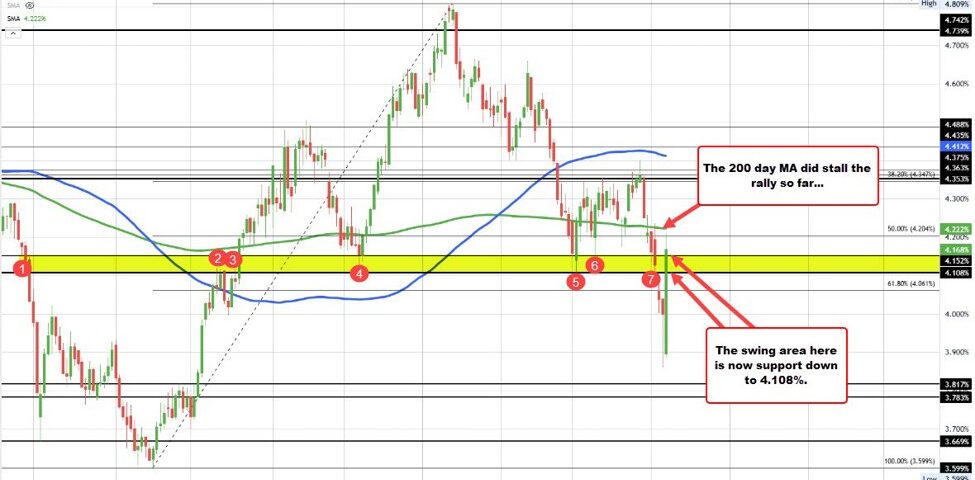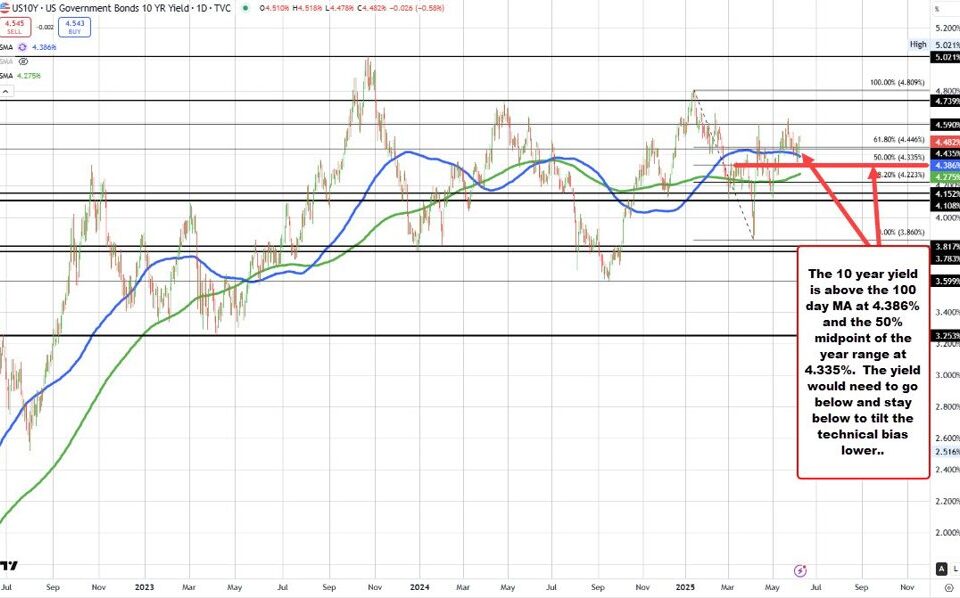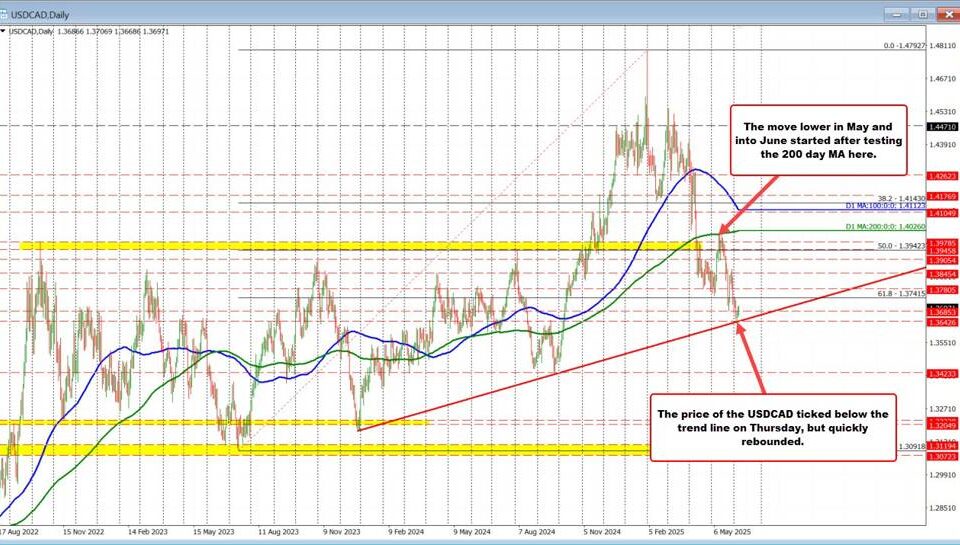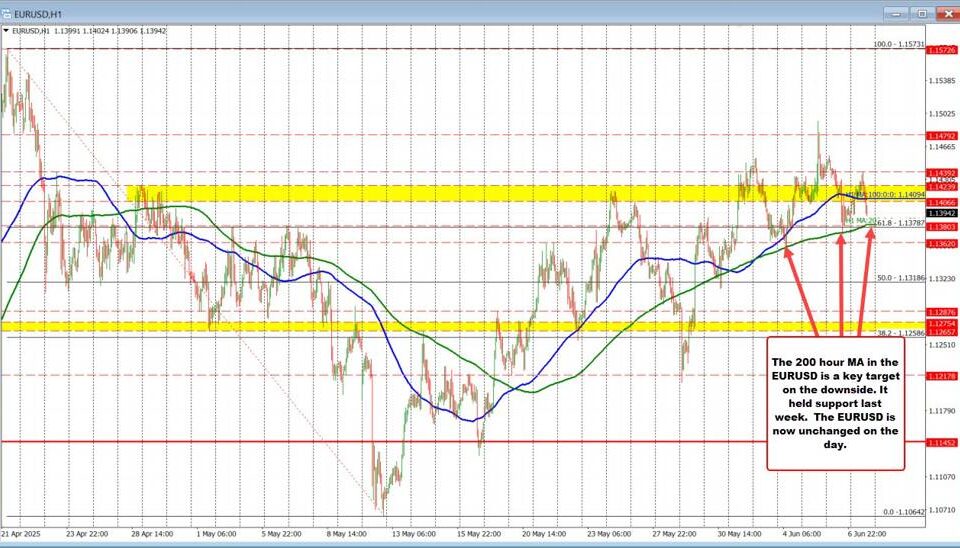
Larry Fink’s Warning: Is a U.S. Recession Imminent? Insights on the Economy and Markets
Tháng 4 7, 2025
Navigating the Skepticism of U.S. Debt Refinancing: A Financial Challenge
Tháng 4 7, 2025Recent Developments in the US 10-Year Treasury Yield: Insights and Implications
The landscape of the US 10-year Treasury yield continues to evolve, marked by a series of significant movements and technical analyses that investors and analysts should closely monitor. As of April 7, 2025, the yield rebounded recently, positioning itself just shy of a crucial resistance level. This upward move was short-lived as it coincided with a broader sell-off in global markets, sparking concerns regarding its potential impact on future yield movements.
Analyzing Recent Movements
In recent trading sessions, the US 10-year Treasury yield demonstrated resilience, rebounding from previous lows. Such movements are pivotal as they often reflect investor confidence or apprehension in the market. However, the recent sell-off in global markets raises questions about the sustainability of this rebound. The proximity to a key resistance level indicates that the yield might face challenges in maintaining upward momentum, highlighting the volatile dynamics currently influencing Treasury yields. Understanding key investment mistakes can aid investors in navigating these market dynamics, similar to those affecting the US 10-year Treasury yield. For more insights, visit The blog discusses key investment mistakes to avoid for long-term financial success.
Technical Indicators: Mixed Signals
A closer examination of the technical indicators reveals a mixed bag of signals for the US 10-year bond yield, which is crucial for investors strategizing their next moves. The Stochastic indicator and the Commodity Channel Index (CCI) suggest a bullish sentiment, indicating potential buying opportunities for investors. However, the Relative Strength Index (RSI) paints a different picture, signaling a neutral position, which implies that the yield may not have strong directional momentum presently.
Furthermore, the Moving Average Convergence Divergence (MACD) has issued a sell signal, urging caution. This divergence amongst indicators indicates a level of uncertainty within the market, highlighting the importance of thorough analysis as investors tread carefully through these conflicting signals. The discussions on recent US-China trade tensions can provide further insights into the macroeconomic conditions influencing Treasury yields. For additional context, check out This blog addresses recent global economic developments.
Pattern Breakdown and Market Sentiment
The recent technical breakdown of the yield falling below the 4% mark is particularly noteworthy. This movement followed the formation of a head and shoulders pattern, a classic formation that often implies a potential downturn in prices. Such patterns can signal a shift in market sentiment, suggesting that investors might need to recalibrate their expectations moving forward.
Despite the presence of bullish signals derived from various technical analyses, the overarching macroeconomic landscape remains fraught with complexity. There has been a noticeable decline in inflation breakevens, and a downward trend in equities further underscores the prevailing economic uncertainty. These developments indicate that while some signals may point toward a favorable environment for US Treasuries, external factors continue to pose challenges that could shape market dynamics in the near term. It’s worth noting that a deeper look into the forex market’s current neutrality can reflect broader market sentiment that might affect bond yields. Check the analysis here: Focusing on the forex market’s current neutrality reflects broader market sentiment.
Conclusion
In conclusion, the US 10-year Treasury yield is currently navigating a landscape filled with both opportunities and pitfalls, as indicated by mixed technical indicators and complex macroeconomic conditions. Investors must remain vigilant and informed, ensuring they understand the implications of market movements and the underlying sentiment driving these changes. As the global economic environment evolves, so too will the dynamics of the Treasury yield, necessitating continuous monitoring and analysis.




